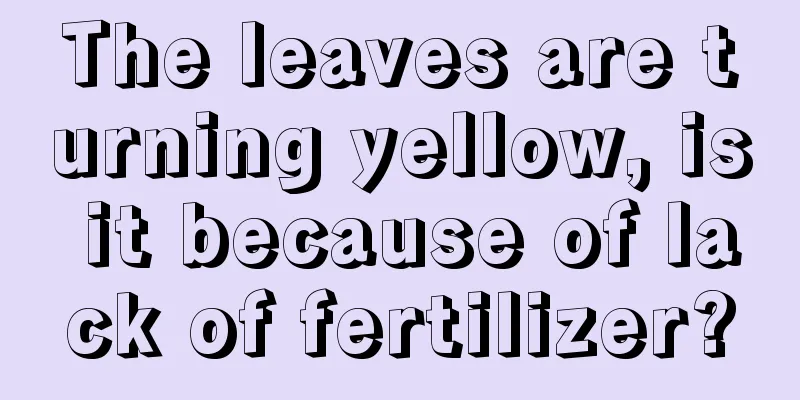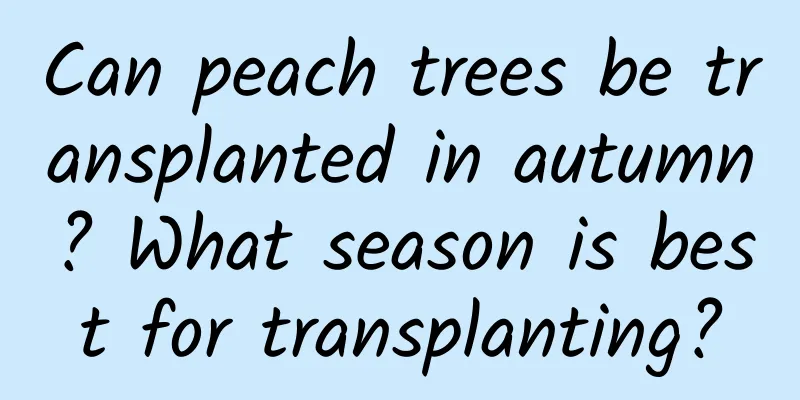The leaves are turning yellow, is it because of lack of fertilizer?

|
When caring for plants and flowers , even if you pay attention to watering them properly, and the maintenance environment has proper light, suitable temperature and humidity, and a suitable environment, the plants will still have yellow leaves. It is most likely due to lack of nutrients. So what fertilizer is missing if the leaves turn yellow? Let’s take a look below. 1. Lack of nitrogen fertilizer Nitrogen fertilizer is very important in the growth process of plants. Once nitrogen fertilizer is lacking, it will first show up on the leaves. Main symptoms: The yellowing leaves caused by nitrogen deficiency are very obvious. Experienced farmers who have been farming for many years can see the symptoms of nitrogen deficiency at a glance. First, the old leaves at the bottom of the plant will begin to turn yellow, and then spread upwards. Within a few days, the leaves of the entire plant will turn yellow, eventually causing the leaves to fall off and the plant to become sick. Solution: Nitrogen fertilizer should be supplemented in time when the old leaves at the bottom of the plant turn yellow. It will be too late if you wait until the entire plant's leaves turn yellow. Apply quick-acting nitrogen fertilizers such as urea and ammonium bicarbonate. They can be directly spread in paddy fields and applied to the roots of dryland crops after diluting with water. The fertilizer will start to take effect three days after application, and the leaves will turn from yellow to green after a week. 2. Lack of phosphorus fertilizer Main symptoms: Insufficient phosphorus fertilizer during plant growth will also cause yellowing of leaves. Specific symptoms are: light reddish brown or brown necrotic spots on the lower leaves of the plant, old leaves turn blue with a slight purple tint, leaf edges turn purple-red, leaf veins (especially petioles) are yellow with purple, and leaf tips turn yellow and die. Solution: When you find that the leaves have turned dark green, add phosphate fertilizers such as ammonium phosphate, superphosphate, and white phosphate fertilizer in time to restore the luster of the leaves. 3. Lack of potassium fertilizer Main symptoms: The symptoms of potassium deficiency are also obvious. The main manifestation is that the surface of the leaves is uneven, and old leaves have dark brown spots from the tip along the edge of the leaves. The edges of the leaves gradually turn yellow and dry, while the middle part and leaf veins are still green. Solution: Add potassium fertilizer in time, apply potassium chloride to the roots, or spray potassium dihydrogen phosphate on the leaves, or deeply apply fertilizers such as wood ash. After a period of time, the plant leaves will return to their original flatness and smoothness. 4. Calcium Fertilizer Deficiency Main symptoms: Young leaves curl and turn yellow, leaf edges curl up and have white stripes, new leaves are difficult to unfold or become twisted in a diseased state. Solution: Replenish calcium in time. You can buy ready-made fertilizers such as calcium nitrate, calcium chloride, etc., or you can use lime to supplement calcium. 5. Lack of micronutrients Trace elements such as iron, sulfur, boron, magnesium, and zinc also play an important role in plant growth. If they are lacking, they can also cause yellow leaves. Main symptoms: Iron deficiency causes old leaves to gradually lose their green color and turn white from the edge to the center, with spots of various colors appearing on the veins, and finally the entire leaf turns yellow; boron deficiency causes young leaves to turn from green to yellow, with thickened and wrinkled leaves and curled edges; magnesium deficiency causes the leaf flesh to turn yellow while the veins remain green, with various spots in the middle of the veins; zinc deficiency causes the leaves to turn yellow and become smaller, with yellow spots on the veins, and the young leaves to be hard, small, and yellow-white in color. Solution: Apply iron, sulfur, boron, magnesium and zinc micro-fertilizers in time. The best way is to spray them on the leaves, but you can also apply them on the roots. That’s it |
<<: How to fertilize Impatiens? What to do if the leaves wilt due to excessive fertilization?
>>: Can orchids be repotted in summer? Can water be sprayed on the leaves?
Recommend
Pest control of sycamore
1. Bronze Psyllid Pest introduction: This pest is...
How to make roses bloom more beautifully and fragrantly
Longer sunshine hours When planting or potting ro...
Cultivation methods and precautions of butterfly dendrobium
1. Maintenance methods 1. Soil: Butterfly Dendrob...
What kind of soil is good for growing lucky trees?
1. Requirements for culture soil There is a sayin...
How to grow perfume orchid
1. Soil To grow perfume orchids, you need to use ...
How to propagate the cut branches of Desert Rose (pruning and grafting methods and precautions)
How to prune and graft Desert Rose Desert rose ha...
What are the cultivation methods and precautions of Calla Lily?
How to grow Calla Lily Calla lily has strong adap...
How often should I water the colorful iron
How often should I water the colorful iron Before...
How to prepare the soil for Sansevieria clavata and what size pot should I use?
1. How to prepare soil It is native to South Afri...
Peanuts planted in water look better than green ivy, and one plant can produce 50 fruits!
Throw a peanut into water and it will turn into a...
Where is the best place to grow sapphire grapes?
Where Sapphire Grapes Are Grown Sapphire grapes g...
How to improve the survival rate of Magnolia grandiflora transplantation
Soil ball size The size of the soil ball is the k...
How to care and manage the lucky tree
Lucky tree growth conditions The lucky tree must ...
How to repot ivy
1. Method of removing the pot The first thing we ...
It is better to water the jujube tree every few days
How often should the jujube tree be watered? The ...









